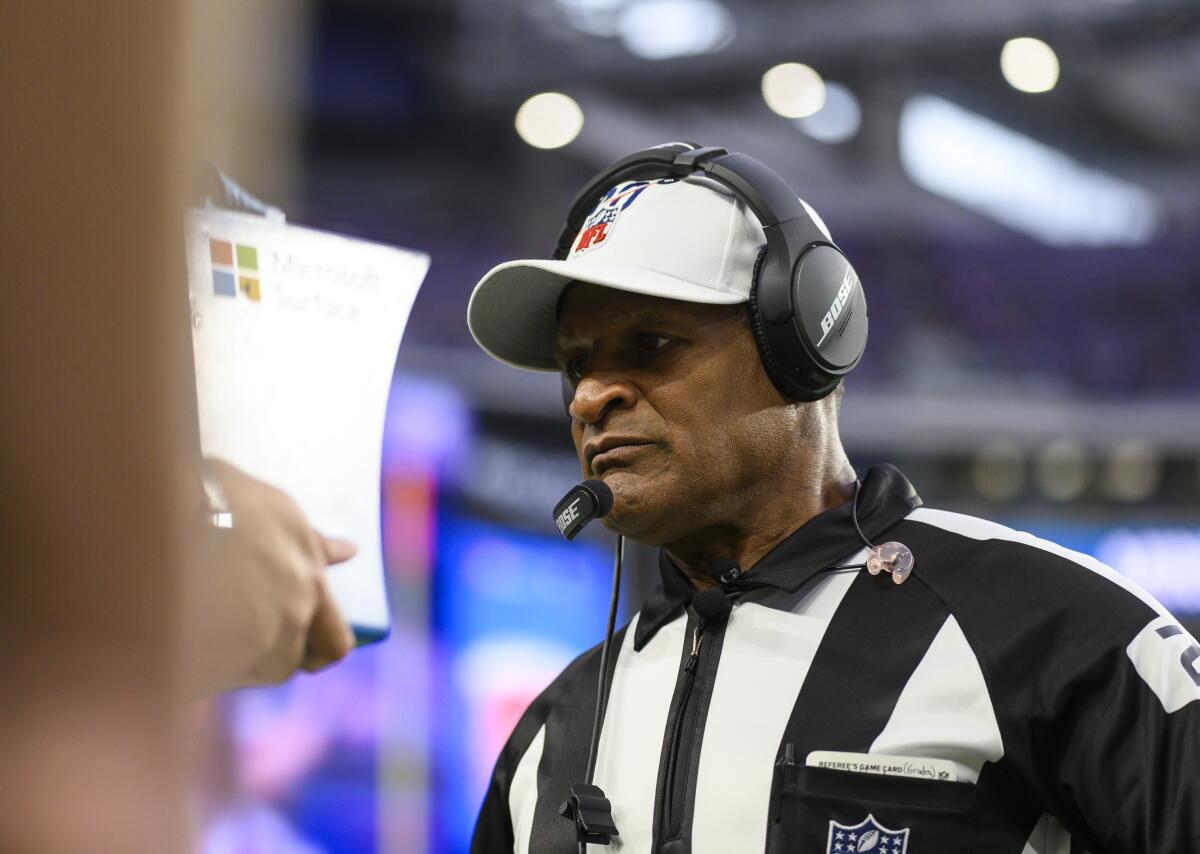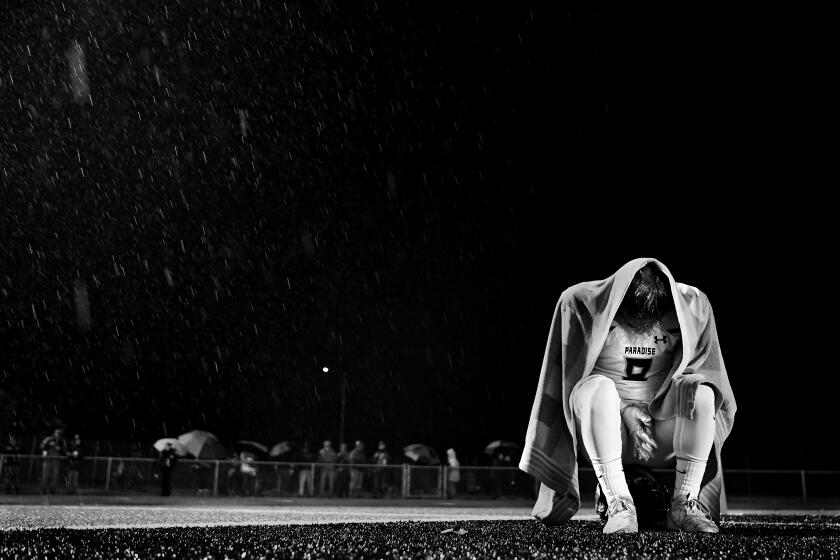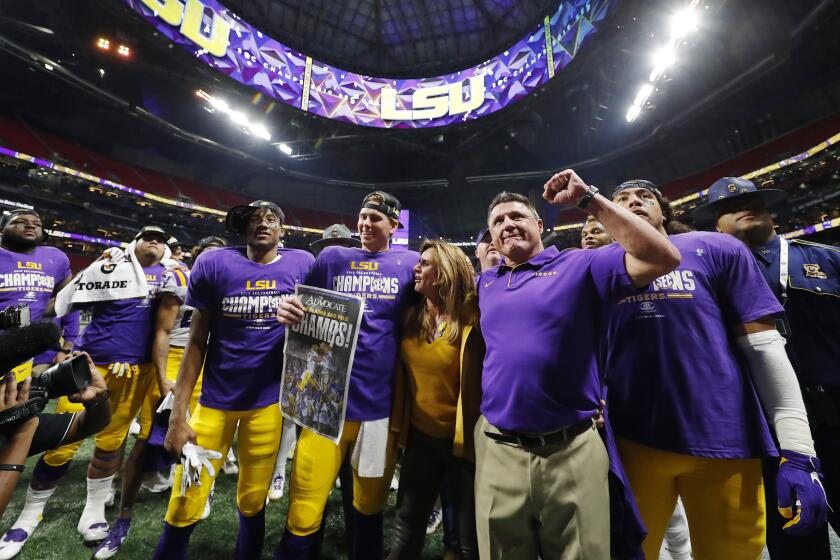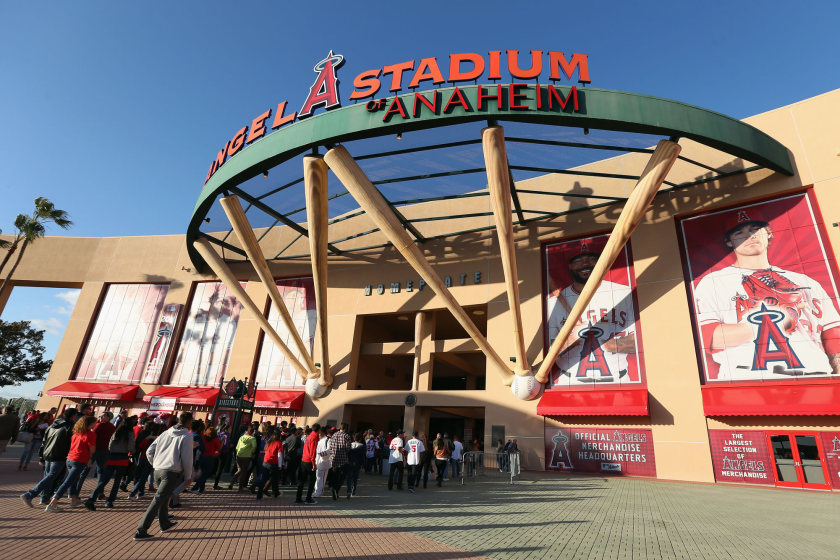Column: It’s time to throw a challenge flag on NFL and college football broadcasts

- Share via
Officially, we’ve waited until the final month of the final year of this decadent decade of NFL and college football TV viewing to toss our challenge flag on behalf of what’s become expected from a sports television consumer.
(Note: It’s got nothing to do with L.A.’s inability to see a San Francisco 49ers game on consecutive weeks against Baltimore and New Orleans, the latter having to do with CBS pawning off a Chargers-Jacksonville, Dick Stockton-narrated impediment onto Fox with every intention of crushing it with a national Kansas City-New England tilt in direct competition).
It starts with the officials on the field, who shudder at making a call based on an already convoluted rule book, but knowing full well an upcoming array of reverse-angle TV replay is apt to make them appear inept. The tedious delay-of-game stall begins.
It continues with the ex-officials proselytizing in the broadcast booths, those who’ve understandably burned out from the process and end up finding a new career to come up with near-polished explanations about what just happened. Their opinions, of course, have no input in the ultimate decision but just throw more verbal logs on the whole divisive fire-roasted baking process.
Eventually, it shifts to officials at the TV networks, pointing out through sketchy modern metrics how viewership is flailing — the NBA can jump in here whenever it feels appropriate. Fewer pay for a cable or dish service, others are fine with compressed replays turned around quickly on YouTube, and a whole other group ends up content with a better alternative to any of this on Netflix.
After further review of our own milieu, this is all self-inflicted.
Paradise High’s football team propped up an entire community in the wake of the devastating Camp fire. But the Bobcats couldn’t ride their emotions to a championship.
Network replays, which started more than half a century ago with simple aspirations of measured entertainment value, have conditioned TV viewers to expect at least one extra look per play, even more if time drags. Advanced digital technology that can super-slow down, stop and then enhance in high definition the most precise athletic movements entitle us to as close to 100% accuracy, per play, per game. And per dollar spent on increasing legalized sports betting that gives some a financial stake (small or not-so-small) in the process of these tedious-reached decisions.
Ideas to put another camera in the replay booth so that we make everything even more transparent further buries the reality that these additional looks only distort everything in the exuberant pursuit of finding irrefutable evidence in a timely manner.
We can no longer handle the non-truth. We’ve turned live sporting events into video guessing games.
Officially, we have no fix for this. Forward-progress technology may someday create a 3D/5G way-back machine that returns us all to a more simpler time. We suspect our 2020 vision for the cleanest football viewing experience will continue to be on a telecast of a high school game.
At least for the time being. At some point, organizers will realize that as this compelling product gets more TV air time, a demand for replay will become the natural unintended consequences.
The conflict fitting room
Anyone else find it ethically challenged that Fox Sports NFL sideline reporter Erin Andrews has married up with Fanatics to use that company’s league branding agreement and slap NFL logos on her clothing line that she then promotes in TV commercials?
Look at your Rams and Chargers official team stores, and NFLShop.com. They’re there for the holidays.
When we questioned this gray-area business relationship on Twitter, Andrews actually thanked us “for the plug” and offered to send our wife some clothes.
How many conflicts of interest can one accumulate in a fell swoop? Aside from her business arrangement, offering gifts to journalists is equally lax in guiltless rectitude.
Louisiana State will play Oklahoma and Ohio State will face defending national champion Clemson in the College Football Playoff semifinals.
Anyone using their position in the media to their benefit, especially linking to a sport you’re directly involved with, warrants red-flag raising. Media members may have already crossed over into commercial pandering with little eyebrow raising. ESPN allows Kirk Herbstreit, Stephen A. Smith, Katie Nolan and Todd McShay to do it. CBS seems to be fine with Tony Romo and Jim Nantz expanding their private enterprise pursuit. Fox’s Michael Strahan has his own line of clothes.
But none of it clearly clashes with the sport they directly cover.
Maybe try wearing a $120 satin bomber jacket with a Rams insignia on it next time during a Jared Goff postgame interview and see how that plays out.
Point-counterpoint
This is the week we’d pick up our year-end double issue of Sports Illustrated. The first half full of jump-the-gun, source-filled rumors. The second half with a bit more seasoned reporting that disputes it all.
More to Read
Go beyond the scoreboard
Get the latest on L.A.'s teams in the daily Sports Report newsletter.
You may occasionally receive promotional content from the Los Angeles Times.












